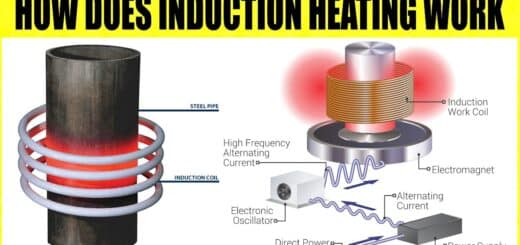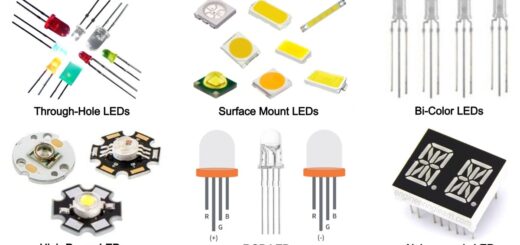What are Resistors? Types of Resistors and Their Uses [Complete Details with Pictures]
![What are Resistors? Types of Resistors and Their Uses [Complete Details]](https://engineeringlearn.com/wp-content/uploads/2021/12/Resistors-1024x539.jpg)
What are Resistors?
What are Resistors? Types of Resistors and Their Uses [Complete Details] :- Resistor is a device which opposes/resists the flow of current through it. The property of a resistor through which it opposes the flow of current is called resistance. The unit of resistance is ohm. Resistance is directly proportional to the resistivity of the material and the length whereas it is inversely proportional to the area of the resistor.
The resistors are available in various sizes and shapes. The resistors are classified on the basis of the following characteristics-
- Power rating
- Tolerance
- Temperature coefficient
- Noise
- Frequency response
- Stability
Types of Resistors
Resistors can be classified into the following Two categories;
- Fixed Resistors
- Variable Resistors
A) Fixed Resistors
These resistors have a fixed value throughout their lifetime. That is, once fabricated the value of resistance of these resistors get fixed. There are namely the following types of resistors-
1. Carbon Composition Resistors: ( Types of Resistors )
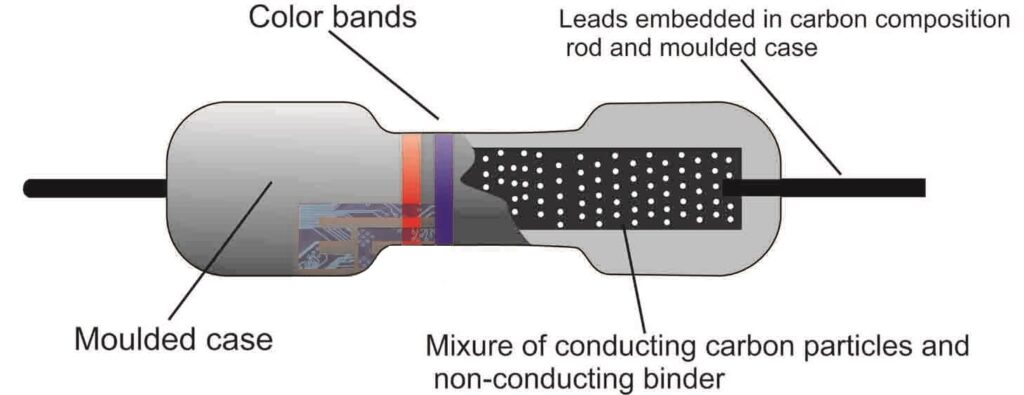
The carbon composition resistor are of cylindrical shape. The resistive element of this resistor is made up of either carbon powder or graphite powder mixed with ceramic clay. The resistor has two attached metal caps and two wires coming of out of its two ends. The resistor is covered up with a plastic coating. is made up of carbon .They were generally used to withstand high energy pulses but they have become obsolete now because they have poor temperature coefficient and poor stability. They produce more noise and have less accuracy. They are now replaced by the film type resistors
Applications :- Protection of circuits, high voltage power supplies, current limiting, strobe lighting and welding.
2. Carbon Film Resistors: ( Types of Resistors )
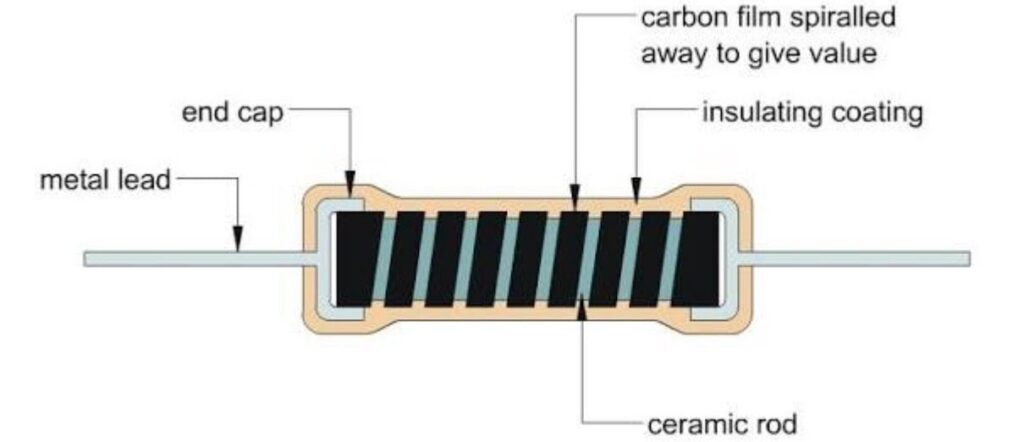
The carbon film resistor is made by depositing a thin layer of carbon film on the ceramic substrate. The carbon film is deposited in the form of a helix. By changing the pitch of the helix, the resistance of the carbon film resistor can be changed. The carbon film resistors are low cost resistors and they also produce less noise as compared to the carbon composition resistor. The tolerance value of these resistors is less than the carbon composition resistors. These types of resistors are used in high voltage and high temperature résistance. These resistors are available in wide range of values.
Applications :- High voltage power supply, radar, x-ray and laser.
3. Metal Film Resistors: ( Types of Resistors )

As far the construction is concerned, the metal film resistors are very similar to the carbon film resistors. They are made by depositing a film of metal on the ceramic substrate. These types of resistors are low cost resistors. They also produce less noise as compared to the carbon composition resistors. They have high stability and low temperature coefficient. They are generally preferred for high frequency applications.
Applications :- active filters and bridge circuits
4. Metal Oxide Film Resistors: ( Types of Resistors )
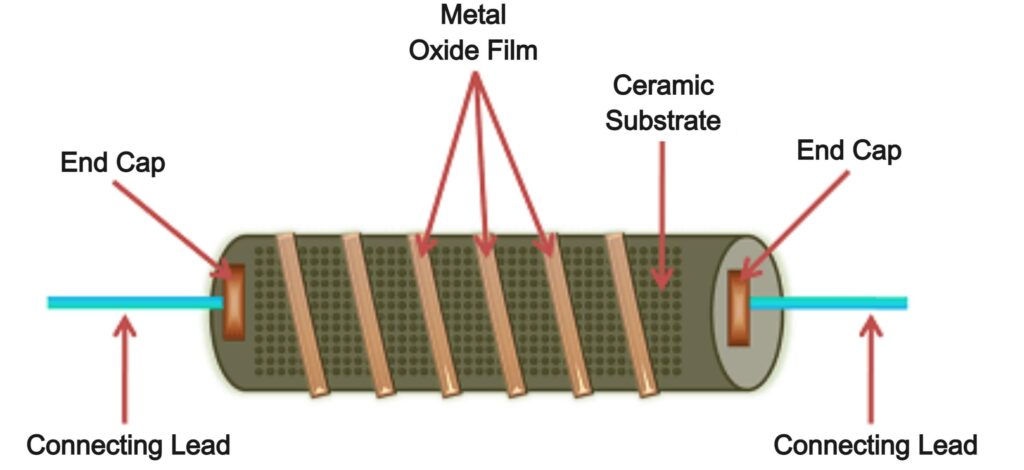
In terms of construction they are quite similar to the metal film and carbon film resistors. But here, instead of metal or carbon, the metal oxide film is deposited on the ceramic substrate. Tin oxide is generally used as the metal oxide film. They are also low cost resistors .They produce more noise, are unstable and have low tolerance as compared to the metal film resistors. They are however better than the carbon film resistors in terms of noise production, stability and tolerance. They have poor temperature coefficient as compared to the metal film resistors. However, they are still used mostly in high temperature applications.
Applications :- High endurance applications
5. Wire Wound Resistors: ( Types of Resistors )
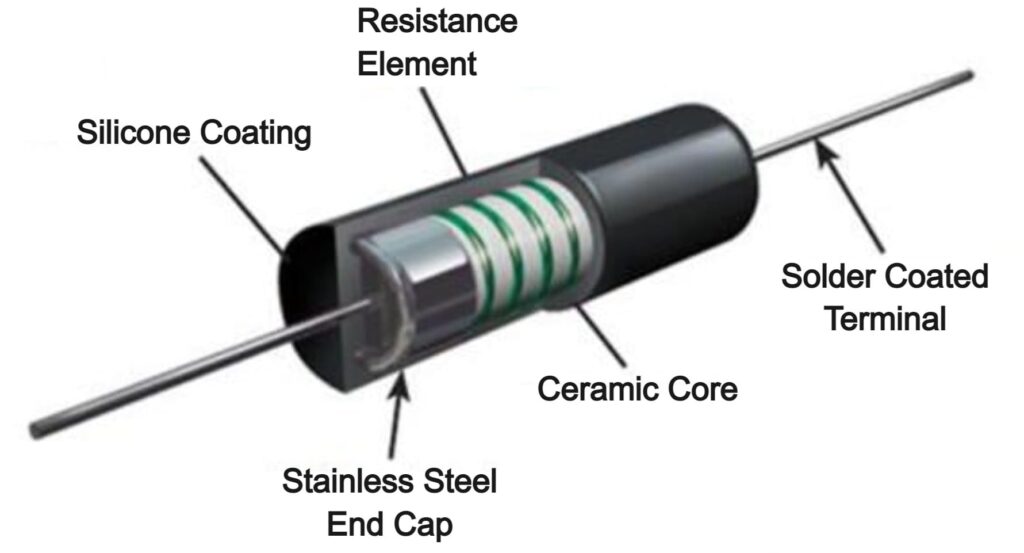
They are used quite frequently. The construction of the wire wound resistor is such that the metallic resistive wire is wound over the ceramic material. The resistance of the wire wound resistors depends upon the thickness of the metallic wire. Metal alloys of copper or silver are used as the winding material. The benefits of this type of resistors are that they provide very high accuracy. They also have very low temperature coefficient of resistance. Because of this low temperature coefficient of resistance, they are highly suitable for high precision applications as well as for the high power applications. However, it is to be remembered that these types of resistors are not suitable for high frequency applications.
Applications :- Stereo systems and high power applications like transducers and televisions
6. Surface Mount Resistors: ( Types of Resistors )

The surface mount resistors are very tiny and they are generally employed in the motherboards. The composition of the surface mount resistors is such that, a thin layer of resistive film is deposited on the ceramic body of the resistor. Generally metal or oxidized metal film is used as the resistive film. On the top face of this resistor a thin insulating layer is deposited. Metallic contacts are situated at the both sides of the surface mount resistors. These are present so that the resistors can be soldered on the PCB. As the surface mount resistors are made up of the metallic film or the metal oxide film; very high accuracy and very low tolerance value can be achieved.
B) Variable Resistors
The resistor whose value can be changed is called variable resistors. These resistors can take any value between zeros to a certain maximum value. They are generally used in electric circuits to adjust the value of voltage and current. These resistors can be classified into the following three categories
1. Potentiometer Resistors
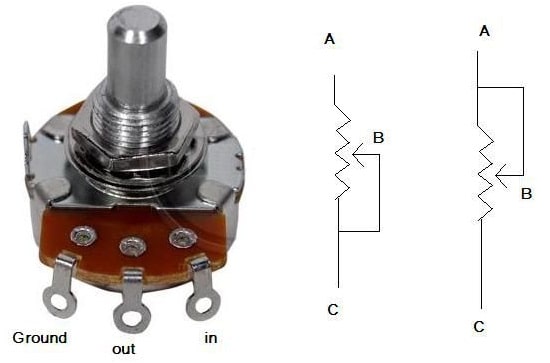
It is a device used to measure the emf by balancing it against the potential difference. The potentiometer is further divided into two types-
- Carbon Potentiometer
- Wire wound potentiometer
2. Rheostat Resistors
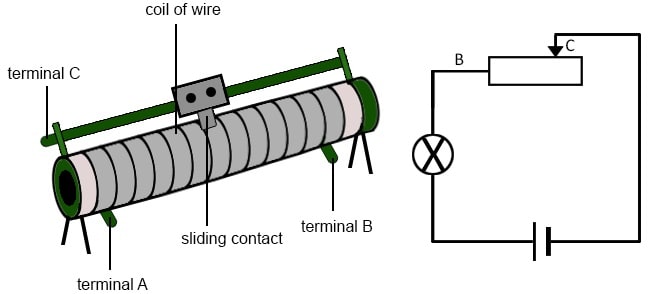
This is a resistance wire on an open tube of ceramic covered with a covering of vitreous enamel.
3. Trimmer Resistors
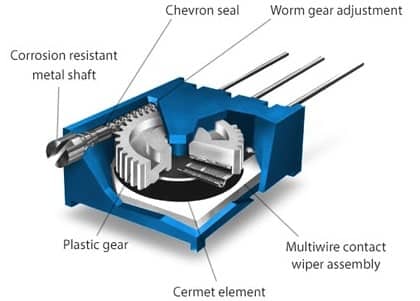
Trimmer is a device to adjust the resistance and the resistance need not be compulsorily variable. The trimmer can be adjusted with the help of a skew.
Image Source :- electroniclinic, utmel, eepower, circuitstoday,

